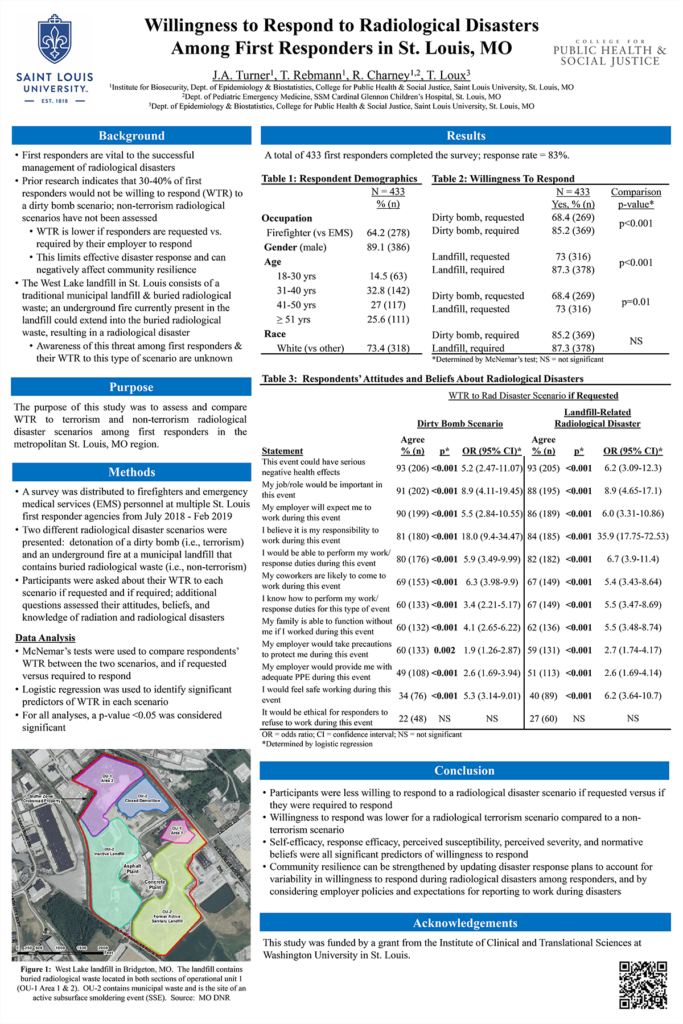Introduction: During radiological disasters, firefighters and emergency medical services (EMS) personnel are expected to report to work and engage in response activities; however, prior research exploring willingness to respond (WTR) to radiological disasters among first responders has only considered radiological terrorism scenarios and not non-terrorism radiological scenarios. The goal of this study was to compare WTR to terrorism and non-terrorism radiological disaster scenarios among first responders in St. Louis, MO, and to explore determinants of WTR.
Methods: Firefighters and EMS personnel were surveyed about their WTR to a dirty bomb detonation (terrorism) and a radioactive landfill fire (non-terrorism). McNemar’s tests were used to assess differences in individual WTR between the two scenarios and if requested versus required to respond. Chi-square tests were used to identify significant individual predictors of WTR. Multivariate logistic regressions were used to determine final models of WTR for both scenarios.
Results: WTR was lower for the dirty bomb scenario than the landfill scenario if requested (68.4% vs. 73.0%; p<.05). For both scenarios, WTR was lower if requested vs. required to respond (dirty bomb: 68.4% vs. 85.2%, p<.001; landfill: 73.0% vs. 87.3%, p<.001). Normative beliefs, perceived susceptibility, self-efficacy, and perceived barriers were significant predictors of WTR in the final models.
Impact: WTR among first responders differed significantly between terrorism and non-terrorism radiological disasters, and if requested vs. required to respond. WTR may be increased through interventions targeting significant attitudinal and belief predictors, and by establishing organizational policies that define expectations of employee response during disasters. Community resiliency can be strengthened through implementation of these public health practices.
Organization – Saint Louis University
Turner JA, Rebmann T, Charney RL, Loux TM
